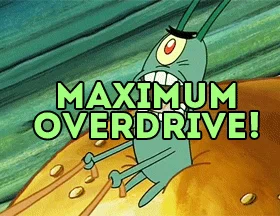You're sitting in your science class and hear two new terms: positive feedback loop and negative feedback loop. They sound like they are talking about the same thing. Does one have "good" outcomes and the other "bad"?

Positive feedback and negative feedback are different, and they play specific roles in maximizing the potential and maintaining balance in our world. These systems span across the sciences, from biology to chemistry.
Key vocabulary
 Key words to understand:
Key words to understand:
homeostasis: the ability to maintain a balanced and stable environment
stimuli: cues from the outside world that cause a reaction
ideal state: environment at homeostasis with little or no change
equilibrium: state of rest when two opposing forces equal/balance each other out
What does positive and negative feedback refer to?
Positive and negative feedback are reactions based on an object's homeostasis. Homeostasisis the ability of a body or system to maintain a balanced and stable environment. Homeostasis maintains this ideal state using stimuli, or cues from the outside world, to adjust itself accordingly.

The environment could affect the body/system's homeostasis and shift away from that ideal state. Based on the system or organism, either the positive or negative feedback loop will respond to that change in homeostasis.
Now that we know the purpose of these feedback systems, what exactly are they?
 Use the scale above to visualize the feedback systems with homeostasis. The center yellow star will be the state of homeostasis.
Use the scale above to visualize the feedback systems with homeostasis. The center yellow star will be the state of homeostasis.
What is positive feedback?
Positive feedbackin science refers to the process of maximizing an outcome based on the stimuli. This process moves the system away from the equilibrium to enhance the stimuli's potential. Imagine the speed limit of a road being 60 miles per hour. In a positive feedback loop, a car would go over that limit to see how fast it can go.

 If the center yellow star is homeostasis, a positive feedback response would move towards the right (green) to maximize the outcome. This is how the system moves away from equilibrium.
If the center yellow star is homeostasis, a positive feedback response would move towards the right (green) to maximize the outcome. This is how the system moves away from equilibrium.

Where do we see positive feedback loops in nature?

Fruit ripening: When an avocado ripens, it releases a gas. In a positive feedback loop, nearby fruits will be triggered by the stimuli, ripen quickly, and release gases as well.
Blood clotting: If a cut leads to bleeding, the body responds with a positive feedback loop to release as many platelets to clot the blood and stop the blood loss.
What is negative feedback?
In science, negative feedbackworks to return the system to equilibrium after being pushed away from it. This process moves the systemback to equilibrium to maintain proper function.
Imagine a scale. If it's unbalanced with two pounds on the left side and three pounds on the right, a negative feedback loop would balance it by placing more weight on the left.

 If the center yellow star is homeostasis, a negative feedback response is like the dial on the red or orange working to return to the yellow, stable state. This is how the system moves towards equilibrium.
If the center yellow star is homeostasis, a negative feedback response is like the dial on the red or orange working to return to the yellow, stable state. This is how the system moves towards equilibrium.

Where do we see negative feedback loops in nature?

Body temperature: The body will cool down or warm up based on the environment. If it's hot outside, the body may overheat, so it will respond by sweating the excess heat to maintain homeostasis.
Blood glucose: After eating, blood sugar levels may rise. The pancreas works to release insulin to maintain blood sugar levels so that it is not too high.
Quiz
Jodie's house has a thermostat that automatically adjusts the temperature to maintain its set point at 72 degrees F. Is this a positive or negative feedback loop? Why?
Take Action
Both positive and negative feedback are important because they maintain a system's homeostasis and overall health.
Negative feedback ensures that the system returns to its most stable state, and positive feedback can maximize the outcome of a stimulus, from healing wounds quickly to producing bountiful fruit.
Positive and negative feedback loops complement each other to stabilize complex systems — just like yin and yang!

Get into a positive feedback loop of learning by maximizing your understanding!
Your feedback matters to us.
This Byte helped me better understand the topic.
